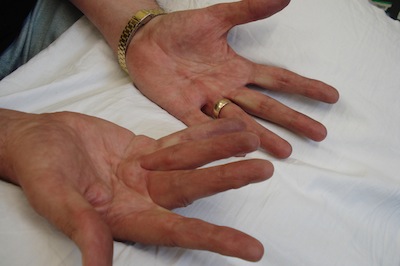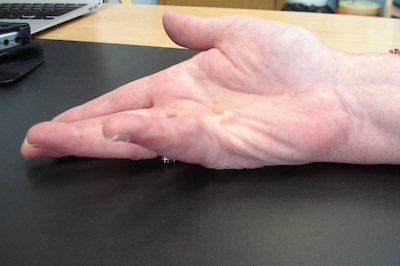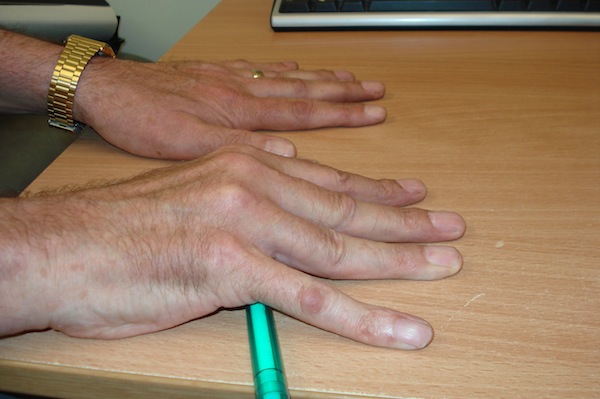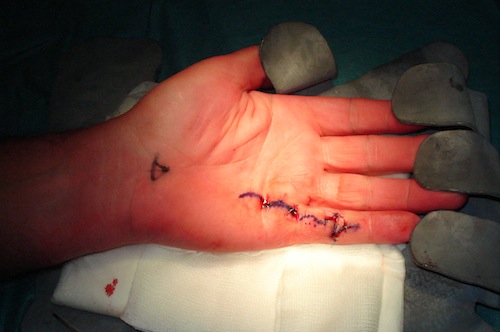Dupuytren’s disease of the hands
The characteristic in Dupuytren’s disease is a finger contracture at the MP or PIP joint or both joints. It is a slowly progressive condition and may often have family history of the same condition.
The patient will not be able to straighten the finger and the usual complaint is that they cannot get gloves on, the poke their eye when washing. They cannot flatten the hand to get into tight spaces such as at work or when getting change out of their pocket.


On examination you will feel the palpable nodules or cords. There may be
associated nodules over the dorsal aspect of the PIP joint (middle
knuckle joint of the fingers) and there may also be Peyronie’s disease or plantar pads of the feet, Ledderhose’s disease, named after German surgeon Georg Ledderhose in 1894.
If there are other areas apart from the hands with fibromatosis (lumpy
fibrous tissue under the skin), then the patient has a strong genetic
tendency for this condition and it may be more widespread, familial and
have a higher recurrence.
What can your GP do? Well the most important thing is for your GP to
confirm the diagnosis . Next, is to establish if you are having a
problem, but if you have come to see the GP specifically about the hand,
then presumably you are. If you have come to see the GP about
associated conditions, such as Peyronie’s disease or Ledderhose’s
disease then examine the hands and establish if there is a problem
there. Beyond that the treatment is within secondary care. There are no
effective non-operative treatments in primary care
.
You will need to be referred to see a Hand Surgeon when the contracted
finger is a nuisance to the patient. Also the patient should be advised
to see a hand surgeon if the Hueston table top test is positive.

The Hand Surgeon may offer you the standard treatment options which are:-
-
Needle fasciotomy
- Surgical fasciectomy
Needle fasciotomy is a minimally invasive procedure and can be done as
an outpatient under Local Anaesthetic in an operating theatre to minimise the risk of
infection. Once you have thad a local anesthetic to numb the part of you hand the surgeon is going to treat, a needle is passed through the diseased area and the band causing contracture of you hand releases and the finger will straighten.
Fasciectomy is a surgical operation to excise a segment of the cord
and nodule to correct the contracture. The extent of the incision and
the amount of excision is dependant on the severity and involvement of
the disease. Mr Miranda uses a minimal technique with smaller but
multiple incision (Moermans' technique). Sometimes the palmar wounds are
left open if upon straightening the finger, there is inadequate skin to
close the wound. This produces less postoperative pain and swelling. It
is vital after this kind of operation that the patient has about 4 to 8
weeks of hand therapy on a weekly basis to achieve a good result and
most will. Irrespective of the technique there is an average recurrence
rate of up to 50% sometime within 10 years.

The recurrence rates in published studies are:-
-
needle fasciotomy (50 to 58% with mean follow-up of three to five years)
- open fasciectomy (12 to 39%, mean follow-up 1.5 to 7.3 years; p =
0.001)
Collagenase enzyme injection (Xiapex) has been discontinued by the manufacturer so is no longer available.
|
|